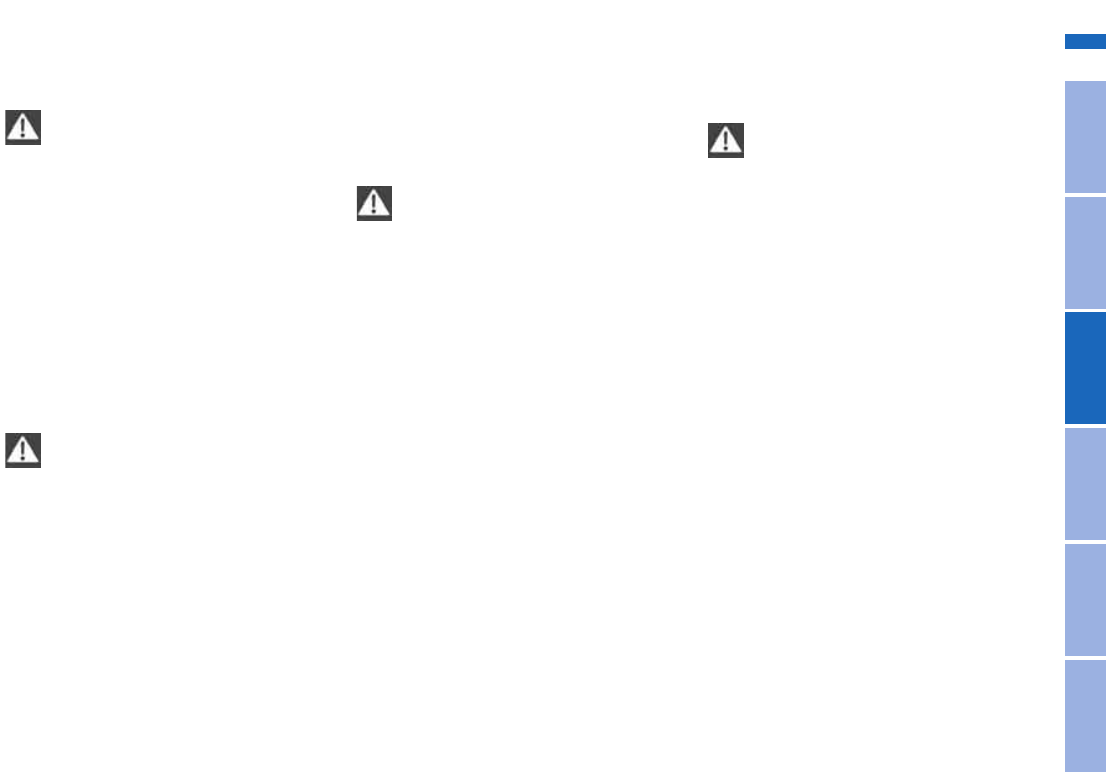
117
Aquaplaning
When driving on wet or slushy
surfaces, reduce speed to prevent
a wedge of water from forming between
the tyre and the road. This situation,
known as aquaplaning, means that the
tyre can actually lose contact com-
pletely with the road surface, so that
neither the car can be steered nor the
brake be properly applied.<
The risk of aquaplaning increases as
the tread depth of the tyres decreases,
see also Tyre tread on page 120.
Driving through water
Only drive through water to a max.
depth of 30 cm (1 ft), and no faster
than walking pace, otherwise damage
to the engine, electrical system and
transmission may be caused.<
Safe braking
Your BMW has ABS as standard. You
brake most effectively by applying max-
imum brake pressure in situations
which call for this: full braking. Since
the car remains steerable, you can
avoid obstacles by turning the steering
wheel as smoothly as possible.
The brake pedal pulsates and the noise
of the hydraulic control system is audi-
ble, warning the driver that the ABS is
active.
Do not rest your foot on the brake
pedal while the car is in motion.
Otherwise, even slight continuous pres-
sure on the brake pedal could cause
overheating, brake pad wear or even
brake system failure.<
Wet roads:
When driving on wet roads or in heavy
rain it is advisable to press lightly on the
brake pedal to apply the brakes briefly
every few kilometres. When doing so,
make sure that no other road-user is
endangered. The resulting heat dries
the brake discs and pads. This will
immediately restore full braking power.
Downhill gradients:
In order to keep the brakes from
overheating and fading, select the
gear or transmission speed which calls
for the least use of the brakes when
descending long or steep hills. Other-
wise, even slight continuous pressure
on the brake pedal could cause over-
heating, brake pad wear or even brake
system failure.<
You can increase the engine's braking
effect by downshifting, to first gear if
necessary, with the automatic transmis-
sion in manual mode, see page 65. This
avoids brake overload.
General driving hints
OverviewControlsMaintenanceMinor repairsDataKeywords
Online Edition for Part-No. 01 41 0 158 017 - © 03/04 BMW AG


















